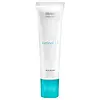What's inside
What's inside
 Key Ingredients
Key Ingredients

 Benefits
Benefits

 Concerns
Concerns

 Ingredients Side-by-side
Ingredients Side-by-side

Water
Skin ConditioningCaprylic/Capric Triglyceride
MaskingGlyceryl Stearate
EmollientCyclopentasiloxane
EmollientButylene Glycol
HumectantStearic Acid
CleansingButyrospermum Parkii Butter
Skin ConditioningPolysorbate 60
EmulsifyingStearyl Alcohol
EmollientGlycerin
HumectantAllyl Methacrylates Crosspolymer
Emulsion StabilisingRetinol
Skin ConditioningPolysorbate 20
EmulsifyingDimethicone
EmollientSimmondsia Chinensis Seed Oil
EmollientChamomilla Recutita Flower Extract
MaskingHypericum Perforatum Flower Extract
Skin ConditioningMalva Sylvestris Flower Extract
Skin ConditioningSalvia Officinalis Leaf Extract
CleansingSambucus Nigra Flower Extract
RefreshingCyclohexasiloxane
EmollientSorbitol
HumectantTocopheryl Acetate
AntioxidantAscorbic Acid
AntioxidantUbiquinone
AntioxidantSodium Hyaluronate
HumectantPropylene Glycol
HumectantBHT
AntioxidantBisabolol
MaskingDimethicone/Vinyl Dimethicone Crosspolymer
Skin ConditioningDipotassium Glycyrrhizate
HumectantDisodium EDTA
Triethanolamine
BufferingCarbomer
Emulsion StabilisingGlyceryl Acrylate/Acrylic Acid Copolymer
HumectantCaprylyl Glycol
EmollientEthylhexylglycerin
Skin ConditioningHexylene Glycol
EmulsifyingPhenoxyethanol
PreservativeWater, Caprylic/Capric Triglyceride, Glyceryl Stearate, Cyclopentasiloxane, Butylene Glycol, Stearic Acid, Butyrospermum Parkii Butter, Polysorbate 60, Stearyl Alcohol, Glycerin, Allyl Methacrylates Crosspolymer, Retinol, Polysorbate 20, Dimethicone, Simmondsia Chinensis Seed Oil, Chamomilla Recutita Flower Extract, Hypericum Perforatum Flower Extract, Malva Sylvestris Flower Extract, Salvia Officinalis Leaf Extract, Sambucus Nigra Flower Extract, Cyclohexasiloxane, Sorbitol, Tocopheryl Acetate, Ascorbic Acid, Ubiquinone, Sodium Hyaluronate, Propylene Glycol, BHT, Bisabolol, Dimethicone/Vinyl Dimethicone Crosspolymer, Dipotassium Glycyrrhizate, Disodium EDTA, Triethanolamine, Carbomer, Glyceryl Acrylate/Acrylic Acid Copolymer, Caprylyl Glycol, Ethylhexylglycerin, Hexylene Glycol, Phenoxyethanol
 Reviews
Reviews

Alternatives
Ingredients Explained
These ingredients are found in both products.
Ingredients higher up in an ingredient list are typically present in a larger amount.
BHT is a synthetic antioxidant and preservative.
As an antioxidant, it helps your body fight off free-radicals. Free-radicals are molecules that may damage your skin cells.
As a preservative, it is used to stabilize products and prevent them from degrading. Specifically, BHT prevents degradation from oxidation.
The concerns related to BHT come from oral studies; this ingredient is currently allowed for use by both the FDA and EU.
However, it was recently restricted for use in the UK as of April 2024.
Learn more about BHTStearic Acid is a fatty acid. It is an emollient, emulsifier, and texture enhancer.
As an emollient, stearic acid helps soften skin. It aids the skin's protective barrier by preventing water loss. It also provides a gentle cleansing effect without stripping away natural oils.
Stearic acid may also be used to enhance the texture of products. It can add volume and stabilize ingredients such as water and oil. This can help water and oil ingredients from separating.
Sources of stearic acid include animal or vegetable fats/oils such as coconut or shea. It can be naturally found in butter, cocoa butter, shea butter, vegetable fats, and animal tallow.
This ingredient may not be Malassezia folliculitis, or fungal-acne safe.
Learn more about Stearic AcidStearyl Alcohol is a type of fatty alcohol from stearic acid. It is a white, waxy compound used to emulsify ingredients.
Fatty Alcohols are most often used as an emollient or to thicken a product. Emollients help soothe and hydrate the skin by trapping moisture.
They are usually derived from natural fats and oils and therefore do not have the same drying or irritating effect as solvent alcohols. FDA allows products labeled "alcohol-free" to have fatty alcohols.
Learn more about Stearyl AlcoholWater. It's the most common cosmetic ingredient of all. You'll usually see it at the top of ingredient lists, meaning that it makes up the largest part of the product.
So why is it so popular? Water most often acts as a solvent - this means that it helps dissolve other ingredients into the formulation.
You'll also recognize water as that liquid we all need to stay alive. If you see this, drink a glass of water. Stay hydrated!
Learn more about Water